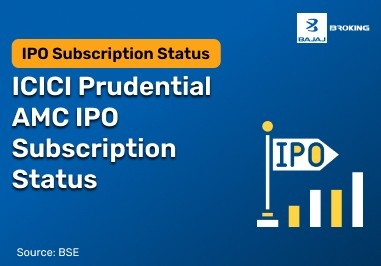India’s banking space in 2025 continues to see steady activity from both public and private sector players. Public banks such as the State Bank of India and the Bank of Baroda have remained engaged across diverse financial services, while private banks like ICICI Bank, HDFC Bank and Kotak Mahindra Bank are expanding their digital and retail offerings. These institutions cater to a wide segment of the population, including individuals, businesses, and rural communities. Regulatory oversight by the Reserve Bank of India supports operational stability across the sector.
The banking sector plays a crucial role in shaping India's financial landscape, offering investors both stability and growth opportunities. As one of the most vital industries in the economy, banking stocks provide a unique investment avenue, influenced by factors such as government policies, economic trends, and digital transformation.
In this blog, we have explored the fundamentals of banking stocks, their features, advantages, risks, and key factors to consider before investing. Additionally, we examined the impact of economic downturns, future growth trends, and the role of government policies in shaping the sector. To provide a well-rounded perspective, we also analysed the top banking stocks in India by market capitalisation, offering detailed insights into their performance, strengths, and market positioning.
Whether you're an experienced investor or just starting, this guide aims to equip you with the necessary knowledge to make informed decisions in the banking sector. If you're looking to invest, having a trading account is essential to access and trade banking stocks effectively.
Other Popular Banking Stocks in India
In addition to the major players, several other notable banking stocks in India include:
- Bank of Baroda: A prominent public sector bank known for its extensive domestic and international presence, offering a wide range of financial services.
- Punjab National Bank (PNB): One of India's oldest and largest public sector banks, PNB provides diverse banking and financial services across the country.
- Union Bank of India: A leading public sector bank with a strong network, offering various banking products and services to its customers.
- Indian Overseas Bank (IOB): A public sector bank with a significant presence, known for its focus on overseas banking and foreign exchange operations.
- IndusInd Bank: A private sector bank recognised for its innovative banking solutions and strong financial performance.
These banks play a vital role in India's banking sector, contributing to the economy's growth and offering various investment opportunities.
India’s banking space in 2025 continues to see steady activity from both public and private sector players. Public banks such as the State Bank of India and the Bank of Baroda have remained engaged across diverse financial services, while private banks like ICICI Bank, HDFC Bank and Kotak Mahindra Bank are expanding their digital and retail offerings. These institutions cater to a wide segment of the population, including individuals, businesses, and rural communities. Regulatory oversight by the Reserve Bank of India supports operational stability across the sector.
List of Banks in India 2025
India’s banking network in 2025 features a combination of public and private entities catering to various customer segments. These institutions are involved in retail services, corporate lending, digital platforms, and financial inclusion. Some banks continue to focus on expanding rural outreach, while others are aligning with evolving digital frameworks. Below is a list of popular banks in India based on key market data:
Company
| LTP (₹)
| PE Ratio
| 52W High (₹)
| 52W Low (₹)
|
HDFC Bank Ltd.
| 1,924.40
| 20.80
| 1,978.90
| 1,448.15
|
ICICI Bank Ltd.
| 1,442.10
| 20.20
| 1,459.70
| 1,051.05
|
State Bank of India
| 785.85
| 9.00
| 912.00
| 680.00
|
Kotak Mahindra Bank Ltd.
| 2,075.00
| 18.60
| 2,301.90
| 1,602.45
|
Axis Bank Ltd.
| 1,196.30
| 13.20
| 1,339.65
| 933.50
|
IndusInd Bank Ltd.
| 767.45
| 8.20
| 1,550.00
| 606.00
|
Bank of Baroda
| 240.25
| 6.00
| 299.70
| 190.70
|
Union Bank of India
| 139.15
| 5.90
| 172.50
| 100.81
|
Canara Bank
| 107.39
| 5.60
| 128.90
| 78.60
|
These figures are reflective of ongoing market activity as of May 2025. Investors and consumers may review these values to track trends and institutional performance.
Overview of 10 Popular Banks in India 2025
Now that you have seen the list of 10 popular banks in India, here is an overview of all the banks to help you learn more about these recognised banks in India.
1. HDFC Bank
HDFC Bank is a respectable private sector bank with its headquarters in Mumbai. It offers a range of financial services, including treasury operations, retail banking, and wholesale banking. The bank is renowned for its wide-ranging ATM network, online services, and efficient customer service. Over the years, it has developed relationships with both corporate and retail clients. It has also consistently worked to update its mobile and online banking systems to increase convenience.
2. ICICI Bank
ICICI Bank is a prominent name in Indian banking, offering services across retail, corporate, and international banking. It provides loans, savings accounts, credit cards, insurance, and investment products. ICICI has a presence in urban as well as semi-urban locations, with a big network of branches and ATMs. The bank continues to invest in technology and innovation to meet the evolving needs of its customers. It also offers a variety of mobile banking solutions and online services.
3. SBI
The State Bank of India (SBI) is a recognised public sector bank in the country. It provides financial services across rural and urban areas and is trusted by millions of customers. SBI’s offerings include savings and current accounts, fixed deposits, home loans, and more. The bank also plays a crucial role in implementing various government financial schemes. Its rural network makes it accessible even in remote locations, supporting financial inclusion.
4. Kotak Mahindra
Kotak Mahindra Bank is gradually growing its presence in the Indian banking sector. It provides a variety of retail and business banking services, including loans, savings accounts, and investment products. The bank also offers a variety of wealth management services and insurance products through its subsidiaries. Kotak has put the customer experience first with its digital banking platforms and simplified services. It has also focused on creating a wide variety of products to meet the financial needs of different customer segments.
5. Axis Bank
Axis Bank provides services like credit cards, loans, savings accounts, and investment products to both individual and business customers. The bank has roots in cities and continues to grow. Additionally, Axis Bank helps clients effectively manage their finances by offering digital solutions through its internet banking and mobile apps. In many Indian cities and towns, convenient banking is made possible by their branch and ATM networks. Furthermore, the bank provides small and medium-sized businesses with financial solutions.
6. IndusInd Bank
IndusInd Bank provides banking and financial services to both individuals and businesses. Its products include credit cards, fixed deposits, home loans, personal loans, and savings accounts. The bank is known for its ability to adapt to technological advancements and update its digital platforms swiftly. Furthermore, IndusInd places a high priority on expanding its clientele by offering customised services across a variety of industries. It has maintained a steady growth trajectory by responding to the shifting financial needs of its clients in different geographical areas.
7. Bank of Baroda
With operations in both domestic and foreign markets, Bank of Baroda is a significant public sector bank in India. It offers corporate banking services, home loans, and savings accounts, among other banking products. In order to increase customer convenience, the bank has implemented a number of digital solutions, such as internet and mobile banking. It can serve both international and non-resident Indian clients thanks to its global presence. While keeping a significant regional presence, Bank of Baroda has prioritised operational efficiency.
8. Punjab National Bank
One of India's ancient public sector banks, Punjab National Bank (PNB), serves a wide range of clients. It provides investment options, deposits, and loans, among other financial services. PNB keeps incorporating digital tools and user-friendly interfaces to modernise its banking operations. The bank has made a concerted effort to enhance internal systems and modernise its technological infrastructure. It has increased its presence throughout the nation, particularly in northern India, through branch expansions and mergers.
9. Union Bank of India
The government-owned Union Bank of India provides a variety of corporate and retail banking services. Online services, business loans, agricultural finance, and personal banking are among its products. Through self-service kiosks and digital platforms, the bank has attempted to make banking easier for its clients. Union Bank has increased the number of its branches and the range of services it offers as a result of recent mergers. Its goal is still to increase customer satisfaction by running dependable and transparent operations.
10. Canara Bank
Canara Bank is a public sector bank with a foundation in retail and business banking. It provides services like personal loans, fixed deposits, and savings accounts, along with SME financing and trade services. The bank has been investing in digital transformation and mobile banking facilities to make banking more accessible. It has also focused on rural development and financial literacy through various outreach programs. Canara Bank continues to support small businesses and self-help groups across regions.
Popular Online Bank Accounts and Alternatives in India
With the convenience of opening and managing accounts from smartphones, digital banking has expanded dramatically in India. Nowadays, a number of banks provide virtual debit cards, fast onboarding, and zero balance requirements for their online accounts. For those who wish to use banking services without going to a physical branch, these options are helpful.
Here are some of the popular online bank accounts and digital alternatives available in India:
- Kotak 811 Digital Savings Account
A convenient option by Kotak Mahindra Bank that allows users to open a savings account using their PAN and Aadhaar. It offers features like a virtual debit card, online transactions, and interest on the account balance. The account can be upgraded later for additional services and higher limits.
- Axis ASAP Account
Axis Bank offers this account with a paperless process. It can be opened using a mobile number, Aadhaar, and PAN details. Users can manage the account fully through mobile banking and get benefits like a virtual debit card, cashback offers, and bill payments.
- HDFC InstaAccount
HDFC’s digital savings account can be set up within minutes using basic identification documents. It supports UPI, mobile banking, and digital payments. Users can later convert this to a full-service account after completing additional KYC. It’s useful for managing everyday transactions online.
- State Bank of India (SBI) YONO Account
Through the YONO app, SBI allows users to open a digital account with limited KYC and upgrade later. It comes with basic banking features such as UPI, fund transfer, and balance check. This account suits users looking for a simple way to start banking with SBI.
- Paytm Payments Bank
A mobile-first banking solution that offers a digital savings account with no minimum balance. It comes with a virtual debit card and supports easy bill payments, UPI, and mobile recharges. Although it does not offer traditional credit products, it's suitable for daily digital transactions.
- Airtel Payments Bank
Geared toward mobile users, this bank provides a savings account that can be opened through the Airtel Thanks app. It includes features such as phone-based banking, UPI services, and cash-in/cash-out at partner retail stores. It's useful for users who need simple banking tools tied to their phone number.
These online accounts provide flexibility and are well-suited for individuals looking to manage money digitally. They’re especially helpful for students, freelancers, or anyone preferring quick, remote access to financial services.
Summary: 10 Popular Banks in India 2025
As of 2025, India's banking industry continues to serve a variety of both public and private establishments to meet a broad range of financial requirements. Savings accounts, loans, digital banking, and investments are among the services offered by banks, ranging from well-known brands like SBI and Bank of Baroda to emerging private banks like HDFC and Axis. Expanding digital access, streamlining customer experiences, and upholding regulatory compliance have been the main priorities of these banks. Together, they serve business and personal banking needs in both urban and rural regions.
How to Define a Bank as an Optimal Bank in India?
When evaluating a bank in India, it helps to look beyond just brand names. An optimal bank should meet essential financial needs while offering accessible, transparent, and user-friendly services. The points below explain what to look for when choosing a reliable and well-rounded banking partner.
Financial Stability
Financial stability involves more than just the size of the bank. It demonstrates a bank's capacity to meet capital requirements in accordance with regulatory standards, produce steady profits, and preserve high asset quality. Even in times of market uncertainty, a bank with sound financial standing guarantees that client deposits are safeguarded and that operations run smoothly.
Service Offerings
An ideal bank offers a wide range of services to meet different financial requirements. These could include mutual funds, home and personal loans, fixed deposits, savings and current accounts, and other investment options. The bank can better assist clients at various stages of their financial lives if its offerings are more flexible.
Customer Experience
The overall straightforwardness of communication at the bank's physical branches and online demonstrates its commitment to offering satisfying customer service. Prompt assistance, transparent interaction, and timely question resolution all contribute to a positive banking experience and the growth of long-lasting customer trust.
Technological Advancements
Digital features are becoming a key part of banking. From intuitive mobile apps to online KYC, UPI services, and net banking, technological adoption makes banking easier and more efficient. A bank that continues to invest in tech upgrades is likely to keep services secure, responsive, and future-ready.
Interest Rates & Fees
Your entire banking experience can be significantly affected by interest rates and fee schedules. Transparency and competition are important in these areas, whether you're making money from savings or repaying loans. Seek out banks that charge fair prices for value-added services while making their interest policies apparent.
Accessibility
The ease of access to a bank also affects its value. This covers the availability, branch locations, and coverage of ATMs in both urban and rural areas. A well-connected bank guarantees that necessary services are always available when you need them and reduces travel inconveniences.
Innovation
Innovation in banking now includes tools like digital wallets, instant loan approvals, AI-driven insights, and real-time account monitoring. Banks adopting modern solutions can better serve evolving customer needs while making processes faster and more streamlined, especially for tech-savvy users.
Reputation & Rating
Reputation is built over time through consistent service, regulatory compliance, and customer satisfaction. You can refer to third-party rankings, market performance, and customer feedback to assess where a bank stands. A well-rated bank usually indicates trustworthiness and operational reliability.
Social Responsibility
These days, social responsibility is another factor used to evaluate banks. Look for companies that support community development, promote green finance, encourage financial inclusion, and adhere to moral lending standards. The goals of socially responsible banks align with broader national and environmental priorities.
Final Thoughts
Easy access and popularity are not the sole considerations when choosing a bank in India. A bank's overall performance in important areas like customer service, digital features, social responsibility, financial strength, and service variety must be assessed. A bank that satisfies your needs, personal or professional, offers dependable service and adapts to the changing financial landscape is ideal. Whether you want to open a savings account, apply for a loan, or invest, having the right banking partner makes money management easier and safer.














